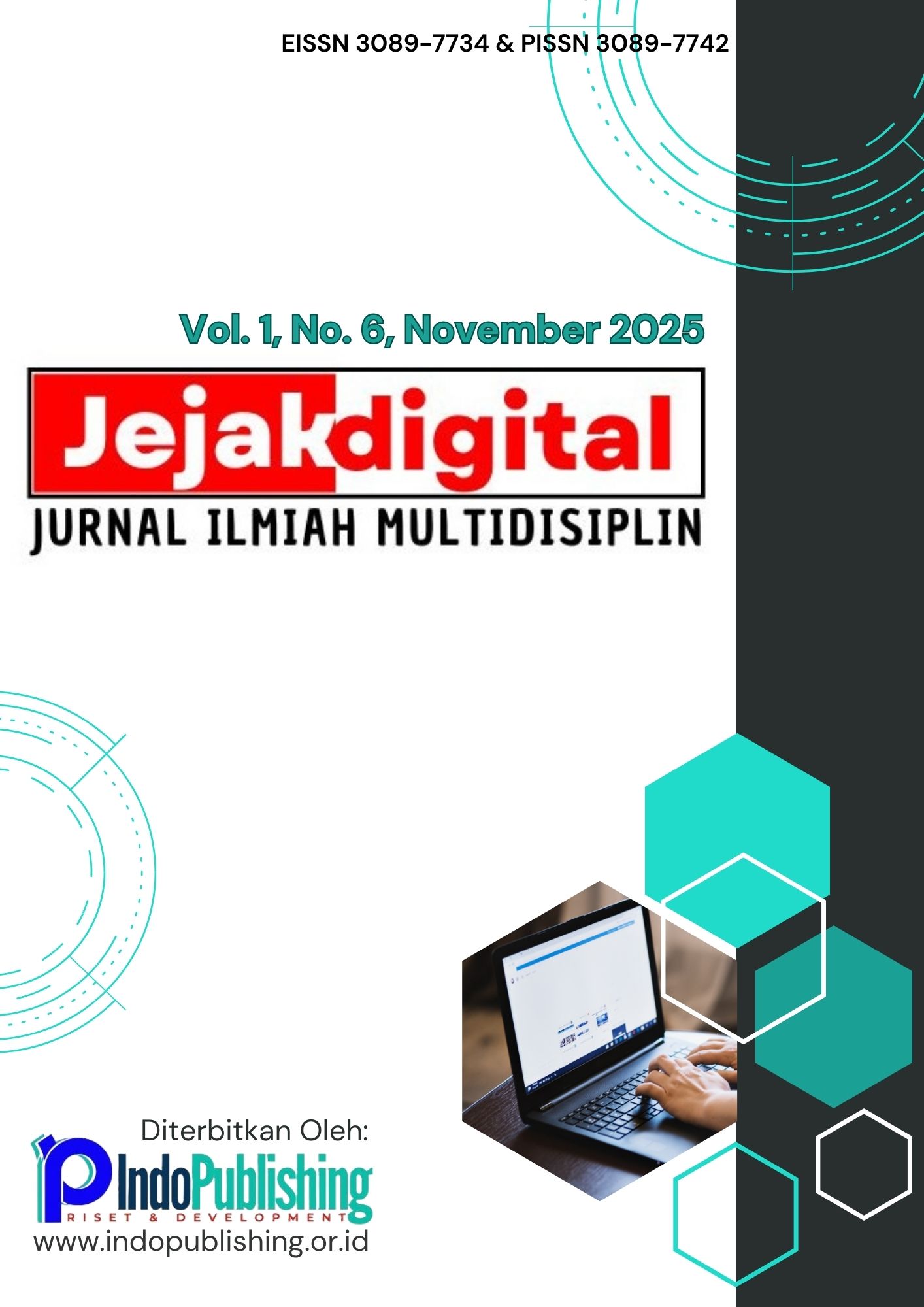Pencegahan Infeksi dan Transfer Mikroorganisme
DOI:
https://doi.org/10.63822/p0ah9x72Keywords:
Infection Prevention, Infection Control, Microorganism Transfer, Chain of Infection, Hand Hygiene, PrecautionsAbstract
This article aims to synthesize the latest scientific evidence on the main ways microorganisms (bacteria, viruses, fungi) spread and assess the most important infection prevention strategies. This study used a narrative literature review method. Articles were searched in scientific databases such as PubMed, Google Scholar, and Scopus, as well as guidelines from global health organizations such as the WHO and the CDC. Keywords used included "infection prevention," "microorganism transfer," "mode of transmission," "hand hygiene," and "standard precautions." Relevant articles published in the last ten years were then analyzed and summarized. The study found that microorganisms spread through several main routes, such as direct or indirect contact through objects (fomites), droplet droplets, through the air (airborne), through food or water (vehicles), or through vectors. Breaking the chain of infection depends heavily on the implementation of Standard Precautions for all patients. Hand hygiene was identified as the single most important and cost-effective intervention. Proper use of Personal Protective Equipment (PPE), cough etiquette, and environmental cleaning also play a crucial role. In addition, Transmission-Based Precautions are needed for certain pathogens that spread through specific pathways.
References
Allegranzi, B., & Pittet, D. (2023). Role of hand hygiene in healthcare-associated infection prevention
Allegranzi, B., & Pittet, D. (2024). Role of hand hygiene in healthcare-associated infection prevention
CDC (Centers for Disease Control and Prevention) Infection Control Guidance: SARS-CoV-2 (COVID-19) 2024–2025
UNAIDS. MENGAKHIRI KETIDAKSETARAAN MENGAKHIRI AIDS. STRATEGI AIDS GLOBAL 2021-2026. Geneva: UNAIDS; 2022.
MSD Manual Versi Konsumen. Infeksi Human Immunodeficiency Virus (HIV): https://www.msdmanuals.com/id/home/infeksi/infeksi-human-immunodeficiency-virus-hiv/infeksi-human-immunodeficiency-virus-hiv
Kementerian Kesehatan RI. Layanan HIV-AIDS (ARV-PDP) Dalam Pandemi Covid-19 Jakarta: Pusat Krisis Kemenkes; 2020. Tersedia dari:
https://pusatkrisis.kemkes.go.id/layanan-hiv-aids-arv-pdp-dalam-pandemi-covid-19
Prudential Indonesia. Ini Dia Cara Penyebaran Virus Corona Jakarta: Prudential Indonesia; 2025. Tersedia dari: https://www.prudential.co.id/id/pulse/article/bagaimana-penyebaran-virus-corona/
Kementerian Kesehatan RI. KEPUTUSAN MENTERI KESEHATAN REPUBLIK INDONESIA NOMOR HK.01.07/MENKES/413/2020 TENTANG PEDOMAN PENCEGAHAN DAN PENGENDALIAN CORONAVIRUS DISEASE 2019 (COVID-19). Jakarta: Kemenkes; 2020.
World Health Organization (WHO). Information for healthcare workers COVID-19, informasi untuk tenaga kesehatan, Panduan Interim, Interim Guideline Geneva: WHO; 2023. Tersedia dari: https://www.who.int/indonesia/news/novel-coronavirus/healthcare-workers
WHO. (2023). Guidelines on Core Components of Infection Prevention and Control Programmes. Geneva: WHO.
CDC. (2020). Infection Control: Basics of Infection Prevention and Control. Atlanta: HHS.
Kemenkes RI. (2021). Pedoman Pencegahan dan Pengendalian Infeksi di Fasyankes. Jakarta.
Potter, P.A., & Perry, A.G. (2020). Fundamentals of Nursing. Elsevier.
Centers for Disease Control and Prevention (CDC). (2023). COVID-19: Prevention. Diakses dari https://www.cdc.gov/coronavirus/2019-ncov/prevent-getting-sick/prevention.html
Centers for Disease Control and Prevention (CDC). (2024). Food Safety. Diakses dari https://www.cdc.gov/foodsafety/index.html
Haque, M., et al. (2020). Health care-associated infections – an overview. Infection and Drug Resistance, 13, 2321-2333.
Kampf, G., et al. (2020). Persistence of coronaviruses on inanimate surfaces and their inactivation with biocidal agents. Journal of Hospital Infection, 104(3), 246-251.
World Health Organization (WHO). (2021). Vector-borne diseases. Diakses dari https://www.who.int/news-room/fact-sheets/detail/vector-borne-diseases
World Health Organization (WHO). (2022). Vaccines and immunization. Diakses dari https://www.who.int/health-topics/vaccines-and-immunization
World Health Organization (WHO). (2023). Infection prevention and control. Diakses dari https://www.who.int/health-topics/infection-prevention-and-control
Downloads
Published
Issue
Section
License
Copyright (c) 2025 Aldona Diva Aurelia, Alma Danita, Echa Ananta Perdani, Evanda Gita Septiana, Rina Fitriani, Via Aulia Ramadani, Liss Dyah Dewi Arini (Author)

This work is licensed under a Creative Commons Attribution-NonCommercial-ShareAlike 4.0 International License.






